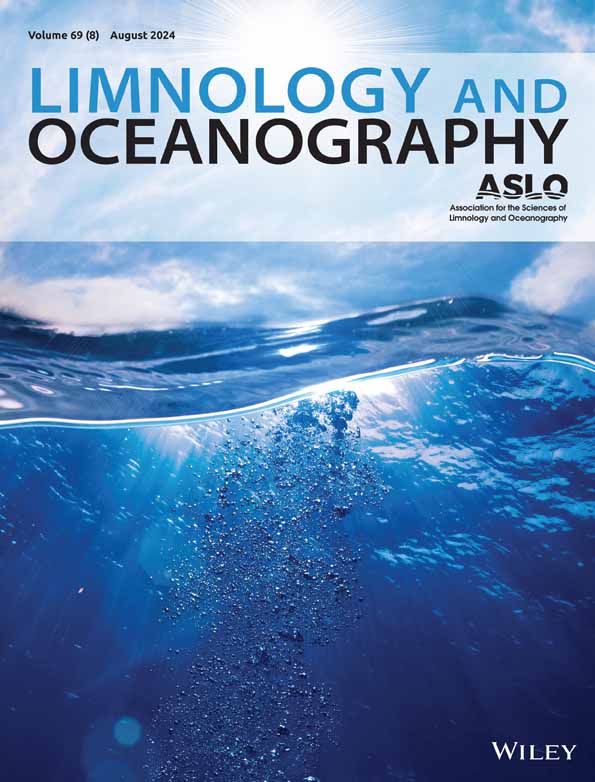Long‐term changes in intra‐ and interspecific trait variability of a small herbivore in a deep perialpine lake
IF 3.7
1区 地球科学
Q1 LIMNOLOGY
引用次数: 0
Abstract
Analyses of trait dynamics provide new insights into the dynamics of communities and ecosystems. While zooplankton traits—and especially the defensive traits—of zooplankton are well studied in the laboratory, there are hardly any studies analyzing long‐term dynamics of zooplankton traits. Here, we study species turnover and trait dynamics of three species of the genus深阿尔卑斯湖小型食草动物种内和种间性状变异的长期变化
性状动态分析为研究群落和生态系统的动态提供了新的思路。虽然浮游动物的特性——尤其是防御特性——在实验室里得到了很好的研究,但很少有研究分析浮游动物特性的长期动态。本文研究了康斯坦茨湖30年环境变化过程中博斯米纳属(Bosmina coregoni)、博斯米纳(Bosmina longispina)和博斯米纳(Bosmina longirostris) 3种博斯米纳属(Bosmina coregoni)的物种更替和性状动态。研究表明,波斯米纳的物种更替对属级体型分布和主要防御性状(包括触须和触角大小)有很大影响。结果还表明,当种间性状差异较大时,平均物种性状能更有效地预测属水平性状,这使得它们在物种丰富的环境中特别可靠。相反,当物种间的性状差异很小时,种内变异可能会模糊属水平的时间模式。此外,我们发现种内性状的变化部分与属水平上观察到的相似,但种内性状的变化也与属水平上观察到的部分不同。虽然20年间营养物质的大量减少似乎与物种组成和性状动态的变化没有强烈的联系,但物种的大量快速更替和性状变化与该湖上层带棘鱼密度的7年增加相吻合。
本文章由计算机程序翻译,如有差异,请以英文原文为准。
求助全文
约1分钟内获得全文
求助全文
来源期刊

Limnology and Oceanography
地学-海洋学
CiteScore
8.80
自引率
6.70%
发文量
254
审稿时长
3 months
期刊介绍:
Limnology and Oceanography (L&O; print ISSN 0024-3590, online ISSN 1939-5590) publishes original articles, including scholarly reviews, about all aspects of limnology and oceanography. The journal''s unifying theme is the understanding of aquatic systems. Submissions are judged on the originality of their data, interpretations, and ideas, and on the degree to which they can be generalized beyond the particular aquatic system examined. Laboratory and modeling studies must demonstrate relevance to field environments; typically this means that they are bolstered by substantial "real-world" data. Few purely theoretical or purely empirical papers are accepted for review.
 求助内容:
求助内容: 应助结果提醒方式:
应助结果提醒方式:


